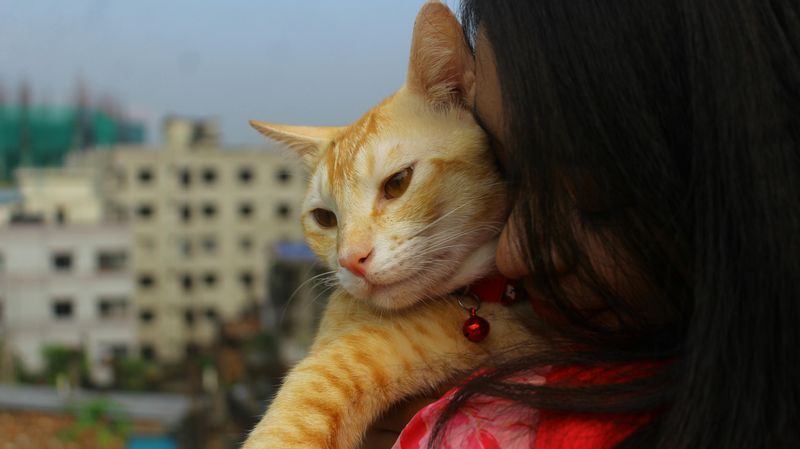10 Things Lonely People Do But Will Never Admit

Loneliness affects millions of people worldwide, often hiding behind closed doors and brave faces. While many struggle with feeling isolated, they rarely talk about the coping mechanisms they develop. These behaviors become secret habits – little rituals that fill the empty spaces but remain unspoken. Understanding these hidden patterns helps us recognize loneliness in ourselves and others.
1. Creating Imaginary Conversations

Lonely individuals frequently rehearse potential dialogues in their heads. They map out entire conversations – complete with witty comebacks and thoughtful responses – that may never actually happen.
This mental practice serves as both preparation and substitute for real social interaction. Many find themselves having full discussions with people they know while alone in their cars or shower.
The brain craves social connection so strongly that it creates these simulations to fill the void. While everyone does this occasionally, lonely people rely on these imagined exchanges far more frequently as a social outlet.
2. Becoming Overly Attached to TV Characters

Binge-watching becomes more than entertainment – it transforms into genuine emotional attachment. Characters from favorite shows start feeling like real friends, their weekly appearances providing consistent social connection without rejection risks.
Lonely viewers often feel genuine grief when series end or beloved characters exit. They’ll rewatch the same shows repeatedly, finding comfort in the familiar fictional relationships that never change or disappoint.
Many even schedule their days around TV programming, treating these viewing sessions as actual social appointments. The predictable nature of these relationships fills an emotional need that unpredictable human connections cannot.
3. Lingering in Public Places

For the lonely, coffee shops offer more than caffeine. They become quiet sanctuaries—places to linger for hours over a single drink, soaking in the soft hum of life around them while hiding behind a screen or a book.
Bookstores, libraries, and shopping malls serve as surrogate social environments where they can feel part of something without direct interaction. The simple presence of others creates an illusion of connection.
Many develop elaborate routines – visiting the same places on specific days, sitting in preferred spots, even timing visits when favorite employees work. These predictable patterns provide comfort and a sense of belonging without requiring vulnerable social engagement.
4. Obsessively Checking Social Media

It’s not just habit—it’s a cry for connection. For many feeling isolated, checking their phone isn’t mindless. It’s a silent search for signs they haven’t been forgotten.
The dopamine rush from each like or comment provides temporary relief from isolation. They often post content strategically timed for maximum engagement, then anxiously monitor responses, measuring their worth through digital validation.
Behind the scenes, they scroll through friends’ posts, absorbing details about gatherings they weren’t invited to attend. Many maintain elaborate online personas that project social fulfillment while sitting alone in empty rooms, creating digital versions of the connections they crave in real life.
5. Talking to Pets Like People

Furry companions become primary conversation partners. Lonely pet owners engage in detailed discussions with their animals, sharing problems, asking questions, and even pausing for imagined responses.
These one-sided dialogues fulfill the basic human need for verbal expression and emotional release. Many develop special voices or personalities for their pets, creating rich inner worlds where meaningful exchange happens.
The unconditional acceptance pets offer makes them perfect confidants. Dog walks and feeding routines provide structure and purpose, while the physical warmth of a cat on a lap substitutes for human touch. These animal relationships become central to daily emotional well-being rather than supplementary.
6. Creating Elaborate Food Rituals

For those who dine alone, the kitchen becomes a stage. Simple meals turn into time-consuming rituals, each step a distraction from the quiet that follows.
Many set proper place settings complete with napkins and candles, even when dining solo. Others cook elaborate recipes meant for families, then carefully portion leftovers for days. The process creates structure and purpose.
Food delivery apps become regular companions, with drivers serving as brief moments of human contact. Some establish relationships with specific restaurants, becoming known regulars who receive small acknowledgments that satisfy the craving for recognition and familiarity in an otherwise isolated existence.
7. Becoming the Ultimate Helper

Volunteering and assistance become strategies for social contact. Lonely individuals eagerly offer help with moves, airport rides, or technical problems – not just from kindness, but as opportunities for human interaction.
They become the reliable friend everyone calls in emergencies. Being needed provides purpose and guaranteed social inclusion without requiring invitation. Many develop reputations as perpetual givers.
This helpfulness creates connection without vulnerability – they’re valued for what they do rather than who they are. Behind their generosity lies hope that practical support will eventually translate into deeper relationships, though it often remains transactional. The helper role becomes both shield and bridge in their isolated world.
8. Developing Parasocial Relationships

In the absence of real connection, familiar voices fill the void. Celebrities, influencers, and podcast hosts become stand-in companions—followed with devotion, their words offering comfort through one-sided bonds that almost feel mutual.
They know intimate details about these figures’ lives while remaining completely unknown to them. Many leave detailed comments on posts or videos, feeling genuine connection when creators respond even briefly.
These parasocial relationships provide predictable comfort without rejection risk. Podcasts featuring the same hosts weekly create an illusion of group conversation, with familiar voices filling silent homes. For many, these relationships serve as training wheels for real social connections, offering emotional engagement without vulnerability.
9. Creating Fake Urgency

Sometimes, the busiest-looking people are the loneliest. Head down, phone out, pace quick—they’re not in a hurry; they’re hiding behind the illusion of importance.
They reference vague plans when declining invitations, suggesting active social calendars that don’t actually exist. Some even make fake phone calls in public, carrying animated conversations with nobody to appear socially engaged.
Errands get strategically spread across multiple days to create daily reasons to leave home. Many deliberately schedule appointments during typically social times like Friday evenings. This performance of busyness protects their self-image while concealing the emptiness of their actual schedules from both others and themselves.
10. Becoming Extremely Online at Night

Nighttime intensifies loneliness, transforming lonely individuals into digital night owls. They dive into internet rabbit holes until early morning hours when silence feels most oppressive.
Anonymous forums become midnight confessionals where they share thoughts too vulnerable for daylight. Many develop relationships with other night owls across time zones, creating a shadow social life that exists only in darkness.
Sleep schedules shift to accommodate this nocturnal community. The internet becomes both escape and connection point, with screen light replacing human warmth. By morning, they’ve built and inhabited entire social worlds that disappear with sunrise, leaving them exhausted but temporarily fulfilled in their otherwise isolated existence.

Comments
Loading…